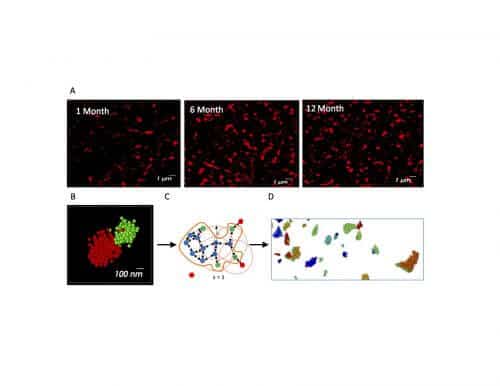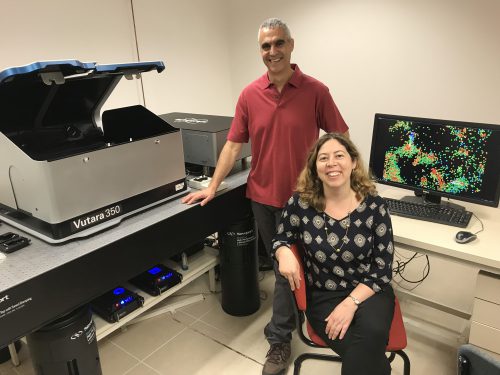With the help of innovative technologies, the researchers identified already at an early stage of the disease, small and toxic deposits of protein that multiply and increase with progress

Researchers at Tel Aviv University, led by Prof. Uri Ashari, head of the Sagol School of Neuroscience, have developed a new method for diagnosing Parkinson's disease, which may allow diagnosis and even treatment already in the early stages of the disease. The method is based on an innovative microscopic technique known as super-resolution, which enables the identification of protein deposits characteristic of the disease even when they are very small.
The research was carried out by Dr. Dana Bar-On, in collaboration with laboratories at the University of Cambridge in England, the Max Planck Institute in Göttingen, and the Ludwig Maximilian University in Munich, Germany. The article will be published on Wednesday 5.6.19/XNUMX/XNUMX in the journal Acta Neuropathologica, which is considered a leader in the field of neurological diseases.
"The brains of Parkinson's patients are characterized by the formation of large deposits of a protein called 'alpha-synuclein,'" explains Prof. Ashari. "These deposits are related to a gradual process in which cells die in the 'black substance' area of the midbrain (substantia nigra). Cell death causes a decrease in the release of the neurotransmitter dopamine in the brain, resulting in motor and later cognitive problems. The problem is that with conventional means, these deposits can only be noticed when they are relatively large, that is, in an advanced stage of the disease, when 75% of the cells of the black substance have already died, and in fact it is no longer possible to treat it. We were looking for a way to diagnose Parkinson's disease at a much earlier stage, and we also tested a possible treatment for the severe disease, which is considered incurable today."
During the research, the partners in Cambridge created mice model for Parkinson's disease, which express the human alpha-synuclein protein with a mutation that spontaneously causes the formation of precipitates - this form of the protein was found in the sediments of post-mortem patients. When these mice reached the age of 9-6 months, Parkinson's symptoms were observed in them. At this stage, the researchers used advanced super-resolution microscopic technology to examine cross-sections of the mice's brains. "We discovered that already at an early stage of the disease, small deposits of the alpha-synuclein protein appear in the cells of the substantia nigra," says Dr. Bar-On. "We also found that the small deposits keep multiplying with the development of the disease, in contrast to the large deposits we knew, whose number remains constant. From this we concluded that the small sediments are the toxic substance that causes the disease. Moreover, we proposed a hypothesis that it is possible that the large sediments are just a compensatory mechanism of the brain in its fight against the toxic small sediments."

Following the discovery, a research partner from the Max Planck Institute in Germany, which specializes in the development of anti-precipitation substances, was able to develop a substance called Anle 138b, which prevents the accumulation of alpha-synuclein deposits. The model mice were treated with the substance, and their condition improved significantly: there was an increase in the release of dopamine in their brains, and their behavior returned to normal. At the same time, we found that the drug caused the breakdown of the small deposits of the protein, which apparently reduced their toxicity.
"In the research, we discovered a central mechanism of Parkinson's disease, which was not known until now, and we found a substance that neutralizes the mechanism, which may serve as a basis for drug development," Prof. Ashari concludes. "Currently, the potential drug is in the clinical trials phase. We are also looking for a way to detect small alpha-synuclein deposits, already at an early stage of the disease, in humans. Since it is not possible to penetrate the brain for this purpose, we are looking for these deposits in more accessible tissues/secretions in the body - in skin samples, and in the future maybe even in the tears of patients and potential patients."

One response
In another study at Tel Aviv University (Prof. Ehud Gazit) it was found that mannitol is a substance that may "decompose" the sediment signal. Is there a connection between the two materials from the sediment joints?